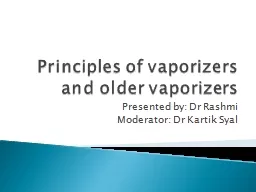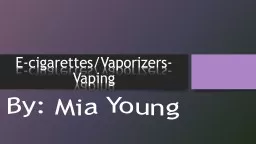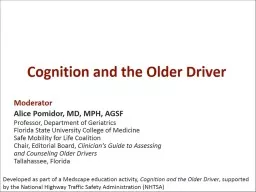PPT-Principles of vaporizers and older vaporizers
Author : alida-meadow | Published Date : 2016-06-21
Presented by Dr Rashmi Moderator Dr Kartik Syal The start 1847 John Snow 18131858 described the relationship between temperature and the saturation of ether
Presentation Embed Code
Download Presentation
Download Presentation The PPT/PDF document "Principles of vaporizers and older vapor..." is the property of its rightful owner. Permission is granted to download and print the materials on this website for personal, non-commercial use only, and to display it on your personal computer provided you do not modify the materials and that you retain all copyright notices contained in the materials. By downloading content from our website, you accept the terms of this agreement.
Principles of vaporizers and older vaporizers: Transcript
Download Rules Of Document
"Principles of vaporizers and older vaporizers"The content belongs to its owner. You may download and print it for personal use, without modification, and keep all copyright notices. By downloading, you agree to these terms.
Related Documents














